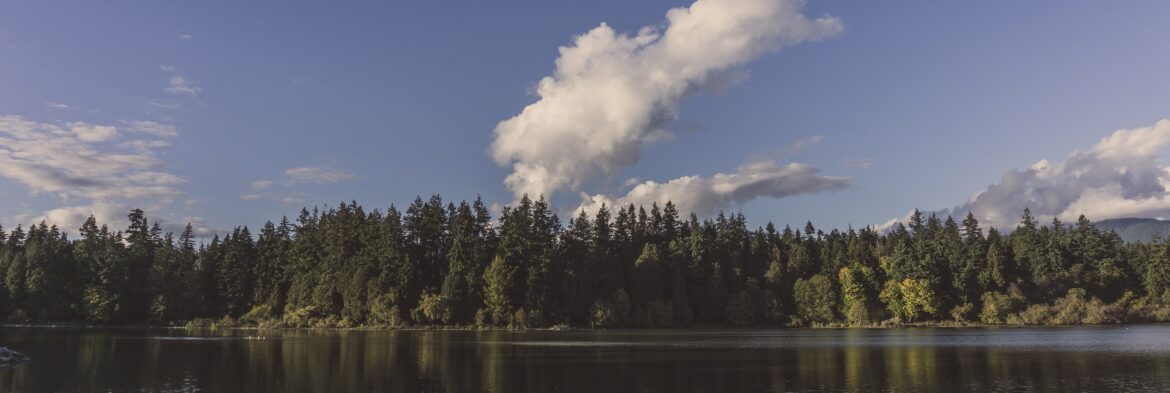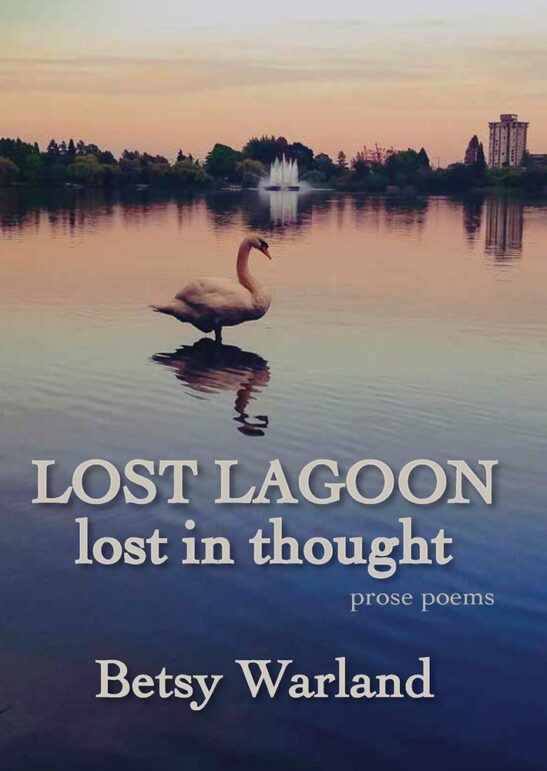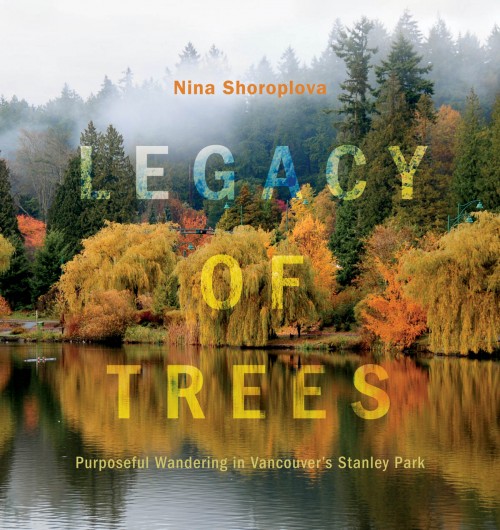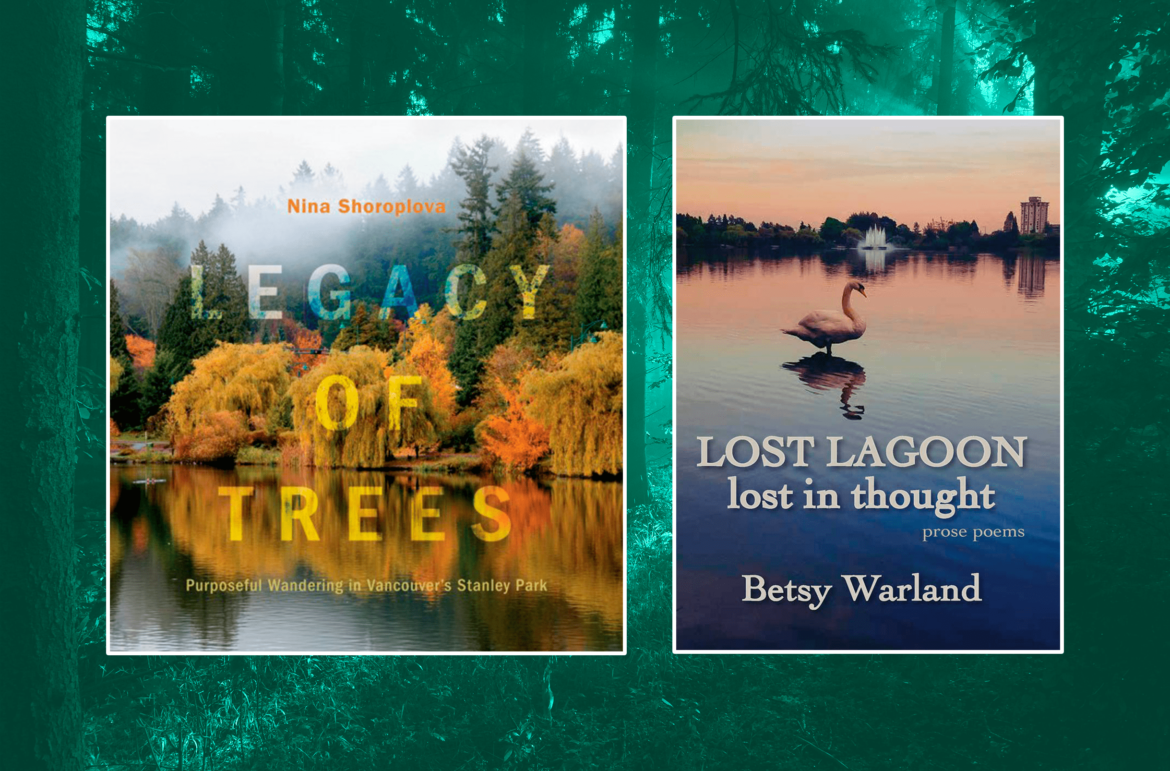“How can one misplace a lagoon?” The Human ponders in Betsy Warland’s latest book, Lost Lagoon/lost in thought (Caitlin Press). Questions like these, about Stanley Park’s well-known Lost Lagoon, form the root of Warland’s investigation into the relationship between nature and humans.
Meanwhile, historian and photographer Nina Shoroplova endeavors to connect to Stanley Park in her own way. Her latest book, Legacy of Trees: Purposeful Wandering in Vancouver’s Stanley Park (Heritage House) relates the history of the park via stories of its oldest inhabitants: trees.
Both books urge readers to spend time reflecting upon an area that has been a long-time staple of Vancouverites’ (and visitors’) recreational lives. What is our relationship to Stanley Park and how might we strive to make a deeper connection to the land and its natural inhabitants?

The Human is our guide throughout Lost Lagoon/lost in thought. Like many folks, The Human has often spent time walking the perimeter of the water, chatting with friends, or quietly enjoying the scenery. Since moving within proximity to Stanley Park however, The Human begins to consider deeper philosophical musings about the Lost Lagoon. Across 55 poems, we join The Human as they ponder these queries and build an intimate relationship with this curious body of water and its inhabitants.

(Caitlin Press)
Likewise, Shoroplova’s experiences meandering throughout Stanley Park form the basis of Legacy of Trees. As the subtitle to the book suggests, Shoroplova is concerned with adding a new layer of purpose to her walks. Her guided tour takes readers across the park as she relates the history of several of the park’s most famous verdant denizens. In short, one might consider Legacy of Trees as a sort of genealogical tour, highlighting those trees that have helped build the legacy of Stanley Park.

(Heritage House)
In both books, readers will delight in seeing new sides to this beloved green space.
Warland’s signature style of poetry lends an extra dimension of lyricism to the Lost Lagoon. Even in moments when the lagoon seems bereft of sound, there is a palpable beat that can be felt, as The Human relates in poem “#28 Bird life is the barometer for the lagoon”:
It was as if the very effort and moisture to produce calls or songs required too much;
taxed lungs increasing effort to inhale the emaciated air too much? The air was weighty.
Legacy of Trees is likewise filled with its own musicality. Shoroplova delights in highlighting the vibrancy that emanates from and around landmark trees, such as the famous Big Fir. Readers can imagine the mournful creaks that emanated from the Douglas-fir as Shoroplova recounts the time its neighbour-tree that created the first land bridge to the park fell. As she writes, the Big Fir was “Shaken, but still standing.” and would go on to become a popular meeting place for folks in the park. Shoroplova invites us to consider the hustle and bustle of couples tittering at the base of this hulk, as it stands watch over the ever-growing developments around the park.
Living adjacent to the park, The Human reveals that the lagoon is full of life, even after humans tuck in for the night. Poems such as “#2 That said, under the cover of darkness and human absence,” plead with the reader to join them in ruminating about the 24 hour heartbeat of the park, as they are startled awake by the cacophony of the lagoon at night:
Human is jolted awake by alarmed quacking of geese and ducks. Coyote, owl, or otter
on the prowl have startled them: their panic echoes inside The Human’s head.
This notion of the agency of the park, outside the bounds of how humans experience it, is also explored by Shoroplova. In chapter 8, “Growing Together”. She explores the many extraordinary characteristics of trees, from their commonly-known role as oxygen producers, to more obscure facts like their role in bringing moisture inland and the fact that scientists have discovered that trees possess something akin to a heartbeat. Shoroplova contrasts this with human behaviours, which often act in dire opposition to the beneficial qualities of trees.
What we come to find, through both authors’ descriptions of the Lost Lagoon, is that it is not so much that the lagoon itself is lost, but it’s our relationship with the land that informs its name.
Resplendent with luxurious details, both in the form of words and stunning photographs, Lost Lagoon/lost in thought and Legacy of Tree: Purposeful Wandering in Vancouver’s Stanley Park grant readers heartfelt perspectives of one of Vancouver’s most cherished green spaces. Both encourage even the most seasoned Stanley Park goers to spend a moment to reflect upon who we share the space with when we visit and how we might connect more thoughtfully with these inhabitants.
What a perfect way to spend summertime when you’re not enjoying the park itself.

